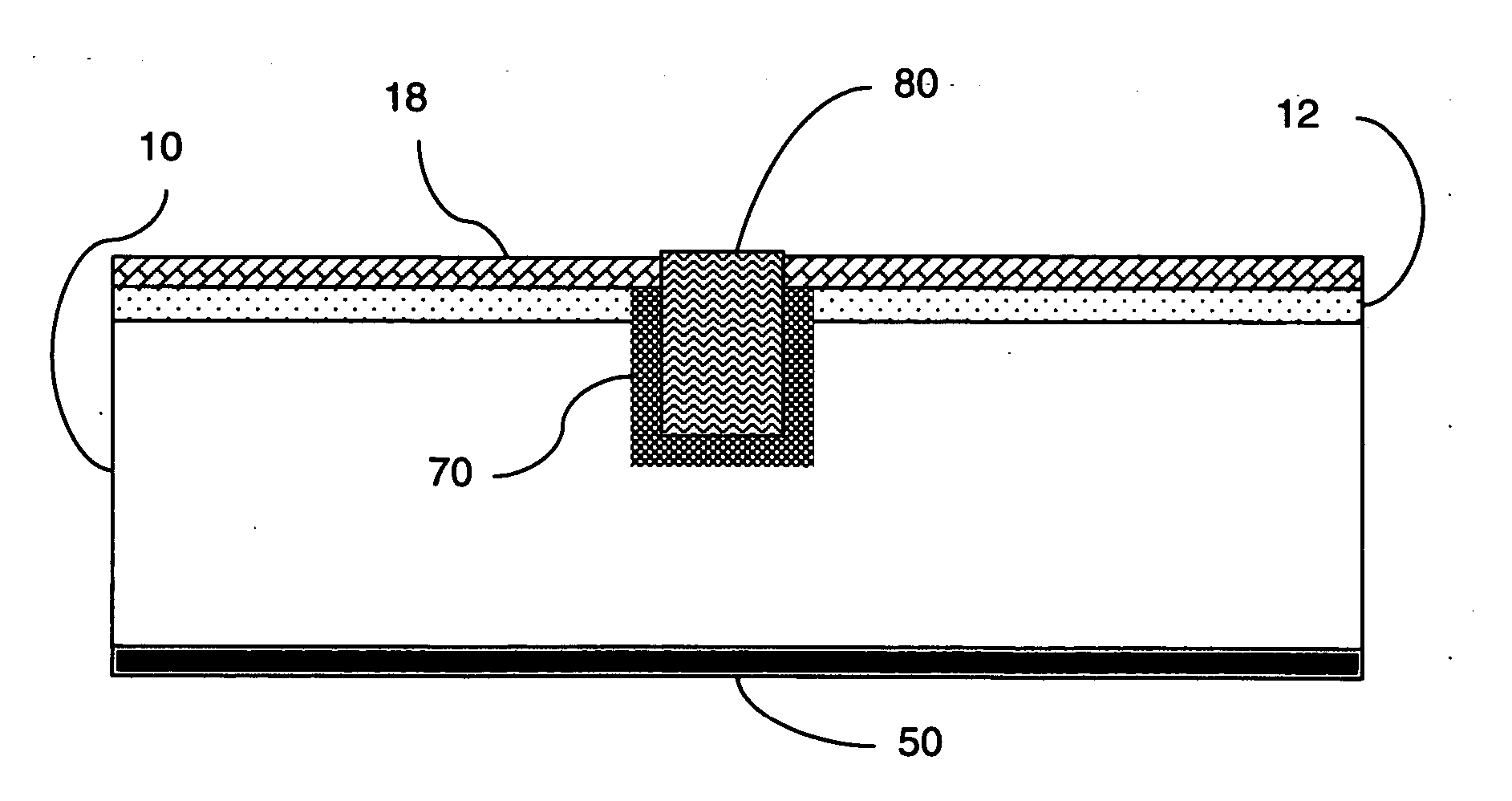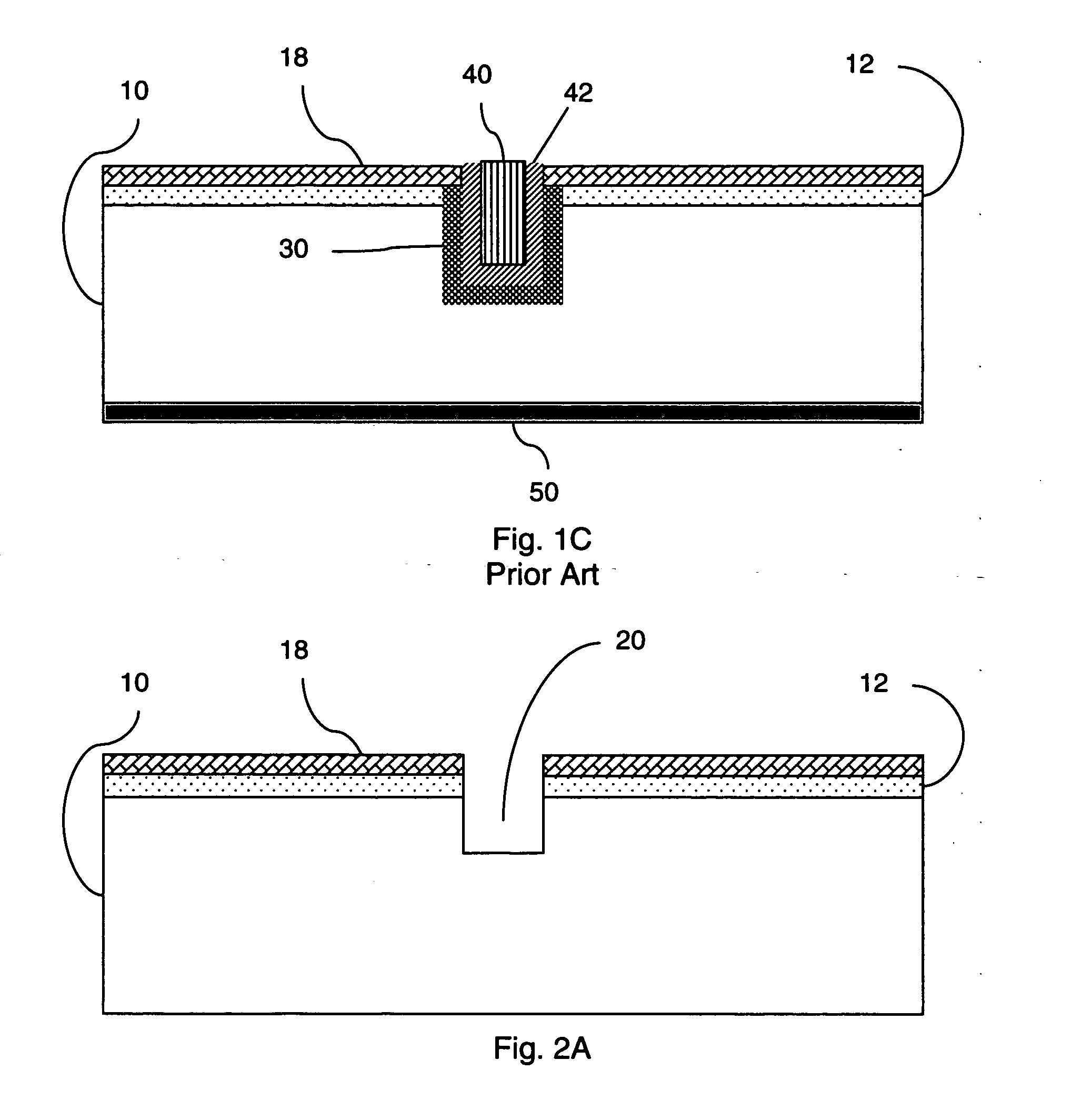Buried-contact solar cells with self-doping contacts
a solar cell and contact technology, applied in the field of photovoltaic solar cells, can solve the problems of high shadowing loss, time and cost of the process, relative complexity, etc., and achieve the effects of reducing the number of grid obscuration steps, and reducing the cost of production
- Summary
- Abstract
- Description
- Claims
- Application Information
AI Technical Summary
Benefits of technology
Problems solved by technology
Method used
Image
Examples
Embodiment Construction
[0040] The present invention permits elimination of electroless plating sequences and provides for a simplified process for fabricating buried-contact solar cell structures, which buried-contact structures may be on either or both the front and back cell surfaces, by using a self-doping contact, including but not limited to a Ag:dopant paste.
[0041] A silicon substrate is typically multicrystalline or polycrystalline silicon, but other types of silicon substrates may be employed, including but not limited to single crystal, tricrystal, and thin crystalline-silicon films on glass or other substrates. Typically the silicon is a p-type semiconductor substrate. However, as described hereafter the invention may also be employed with n-type semiconductor substrates.
[0042] A preferred embodiment of the present invention provides a method for fabricating buried-contact cell structures that eliminates the heavy diffusion step and replaces the electroless plating sequence (two plating and on...
PUM
 Login to View More
Login to View More Abstract
Description
Claims
Application Information
 Login to View More
Login to View More - R&D
- Intellectual Property
- Life Sciences
- Materials
- Tech Scout
- Unparalleled Data Quality
- Higher Quality Content
- 60% Fewer Hallucinations
Browse by: Latest US Patents, China's latest patents, Technical Efficacy Thesaurus, Application Domain, Technology Topic, Popular Technical Reports.
© 2025 PatSnap. All rights reserved.Legal|Privacy policy|Modern Slavery Act Transparency Statement|Sitemap|About US| Contact US: help@patsnap.com



